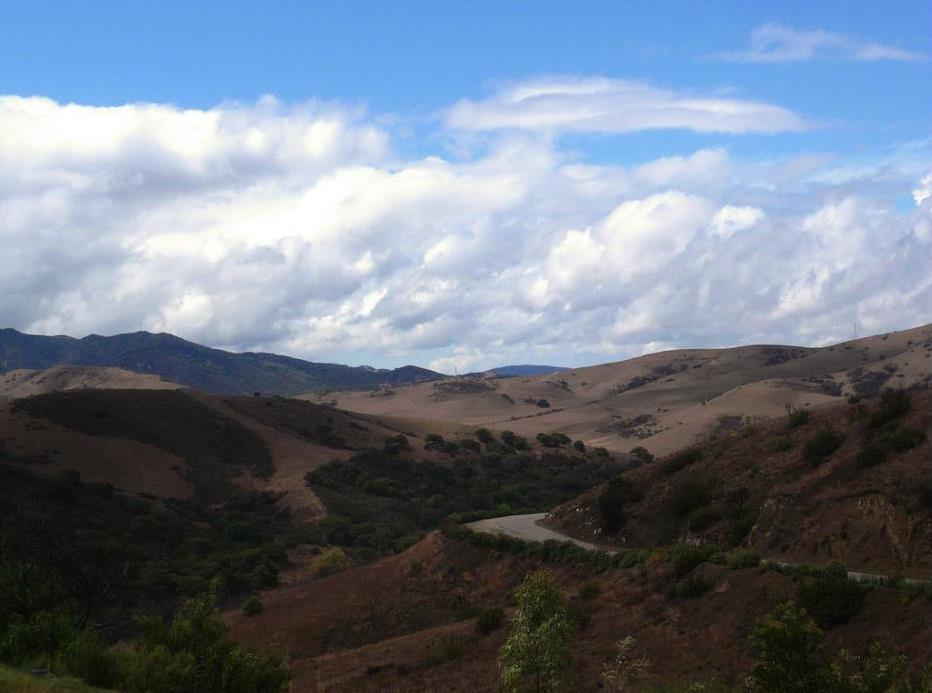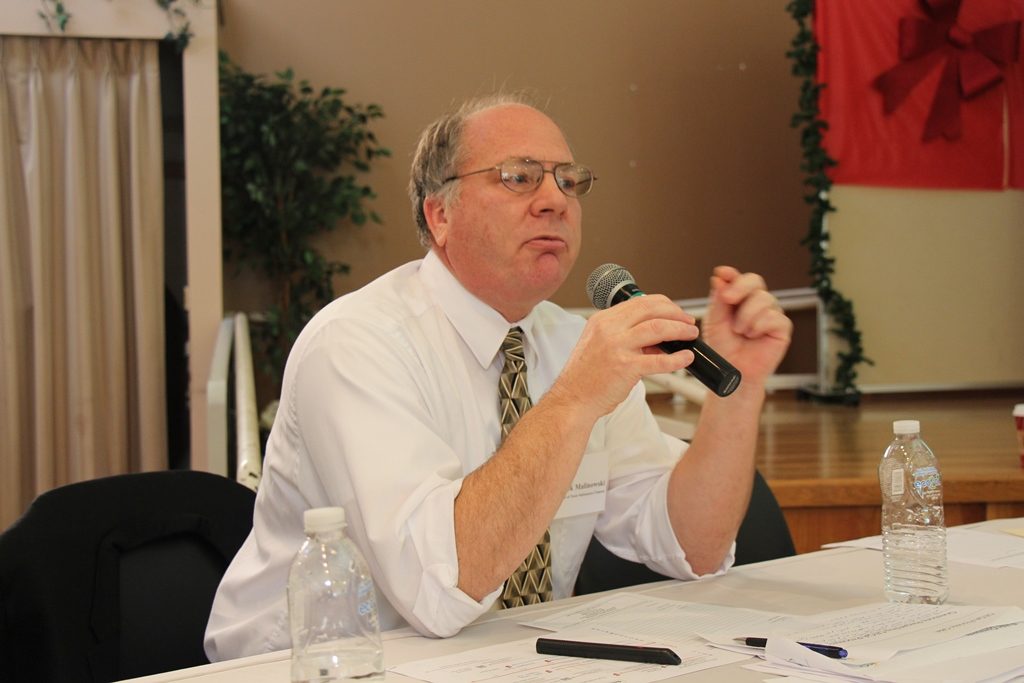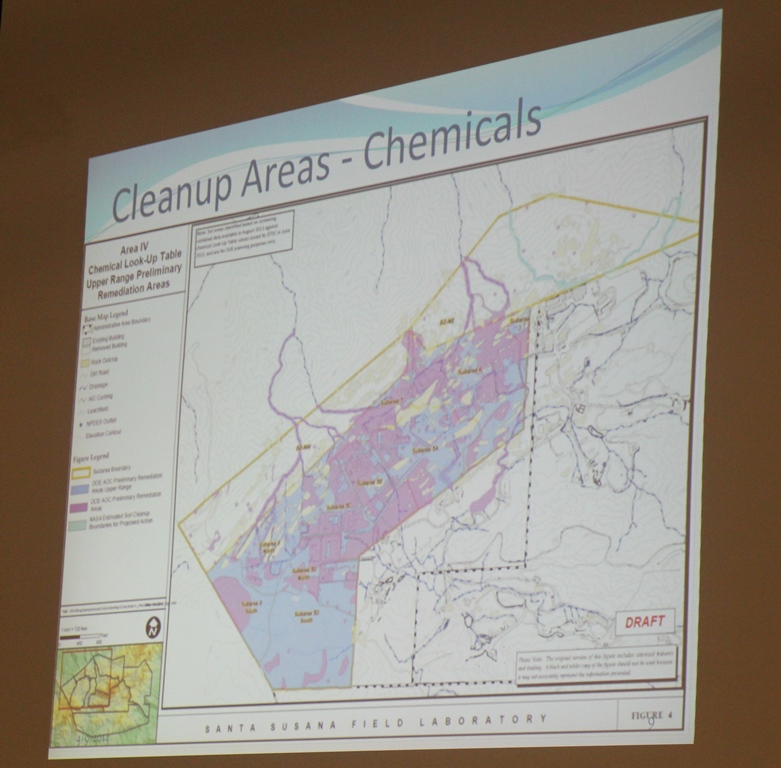
EnviroReporter.com Findings Summary
- DTSC ignores government reports indicating Brandeis-Bardin contaminants
- Documents claim no threat based on cherry-picked reports
- DTSC claims contaminants “do not pose a threat to human health” when data differs
- Data released by DTSC itself contradicts assertion no toxin migration from SSFL to camp
- Department employs toxin standards for Brandeis-Bardin that are weaker than Area IV cleanup
- Strontium-90 standard for camp 42 times higher than DOE cleanup level for Area IV
- DTSC uses weaker standards to assert harmless levels of radiation & chemicals
- ‘White paper’ falsely claims all chemicals at camp are at background levels
- Toxic department misrepresents US EPA Area IV study to claim camp clean
- Paper discounts high hits of contamination as lab mistakes
- DTSC claims chemicals in Brandeis-Bardin “may not be from SSFL sources.”
- Suggests rocket fuel additive perchlorate in camp plants is conceivably natural

DTSC DOCUMENT ONE:
“Executive Summary of Technical Memo on the Brandeis Bardin Campus”
7 page PDF
1. Page 1/7: Title of Executive Summary page link itself shows this document summary is dated “March 2017” and summarizes Technical Memorandum, meaning that the longer document is dated no later than March 2017 as well. DTSC’s Brandeis-Bardin information was released to the public May 2, 2017.
[ER NOTE: EnviroReporter.com‘s Brandeis-Bardin’s Toxic Denial exposé and investigation was published online April 6, 2017. Our investigation included data from 2015, 2016 and 2017 government reports detailing contamination finds in the Brandeis-Bardin Campus (BBC or BBI), two reports of which DTSC had actually sent EnviroReporter.com. DTSC had a whole month to amend this error-ridden report by including this information, which EnviroReporter.com analyzed making it easy to understand, but chose not to. The person whose name is on this report is DTSC’s project manager for SSFL, Mark Malinowski. Malinowski, Ray Leclerc and other DTSC personnel are responsible for this ‘white paper’.]
2. Page 1/7: Second sentence – “The SSFL property will require soil cleanup for chemical and radiological contaminants.”
[ER NOTE: Since government-responsible soils are “required” to be clean up, and the cleanup is to background, shouldn’t Brandeis-Bardin soil over background be cleaned up to background as well if shown a result of SSFL activities, specifically NASA and Department of Energy (DOE) activities?]

3. Page 1/7: “Levels of radionuclides on the BBI campus appear to be within the natural background range”
[ER NOTE: FALSE –
3A) 1993 and 1995 Rocketdyne reports showing Sr-90 over background in 19 separate soil samples. The 1995 report showed that tests at BB-03 in 1994 found both Cs-137 and Sr-90 that would be substantially over background values derived by the EPA in 2011 and published in 2012. A cesium-137 (Cs-137) sample radiated 65.9 percent over its background.
3B) 2004 STL Richland soil report found Pu-239/240, Ur-238 at levels higher than highest in Area IV, beta at 2.18 times UC Berkeley-derived background and alpha radiation in the camp’s 2004 sludge also came in at over two times the median average according to a U.C. Berkeley nuclear expert’s “range of gross alpha.”
3C) 2005 STL Richland water report completed in 2006 found Sr-90 over double both the Los Angeles and national averages and Pu-239/240 at nearly half as high as the highest Pu-239/240 pulled and tested in Area IV groundwater by the EPA. Also found radioactive tritium at double background, though it should be zero in groundwater, as was beta radiation compared to the national average.
3D) Jan 20, 2016 DOE report sent showing trio of BBI wells all the much further down at Meier Canyon level that show Area IV nuclear fingerprints. That report stated that several Brandeis-Bardin wells close to Meier Canyon were recommended for future sampling because “Cadmium-113m neutron activation of Cadmium-112 used in reactor control rods – possibly site process related” was found in a well. Nor does DTSC divulge that DOE reported on another well in the same area that had the radionuclide tin-126 and that “Tin-126 is a fission product and is possibly site process related.” This crucial information proves beyond a shadow of a doubt that SSFL radiation has migrated down into Brandeis-Bardin groundwater.
3E) May 2016 American Jewish University (AJU) claim of “extensive” testing. Study took only 14 samples out of Brandeis’ 2,878 acres. Even so, one of those 14 samples found strontium-90 at two and half times local background.]
4. Page 1/7: “Levels of chemicals and radionuclides at the BBI campus do not pose a threat to human health”
[ER NOTE: FALSE –
4A) November 2016 NASA report shows levels of fluoride in Brandeis-Bardin artesian well SP-29B that exceed California Maximum Contaminant Level (MCL) for it in drinking water. Artesian well SP-29B’s 4.8 milligrams/liter of water more than doubles California’s MCL for the chemical. A reading of 4.2 mg/L in the same well in the 1st Quarter shows that the toxic level of fluoride in Brandeis-Bardin water increased over that period.
4B) According to documentation obtained by EnviroReporter.com, the California Highway Patrol considers any material or situation over three times background to be the triggering level for a hazardous materials incident.
4C) The DOE report given to American Jewish University, owner of Brandeis-Bardin, then Jewish Journal which published it December 7, 2016 showed a list of Brandeis-Bardin contaminants found above Area IV background levels with their exact Brandeis-Bardin measurements by multiple times.]












Recent Comments